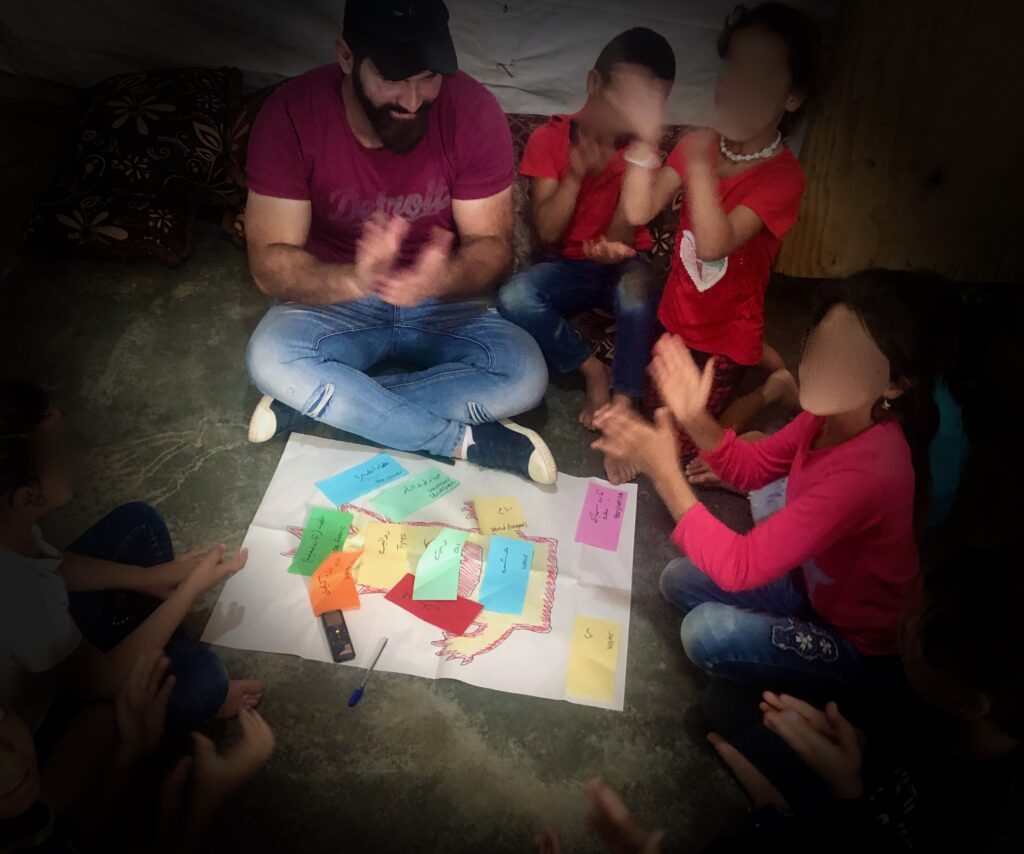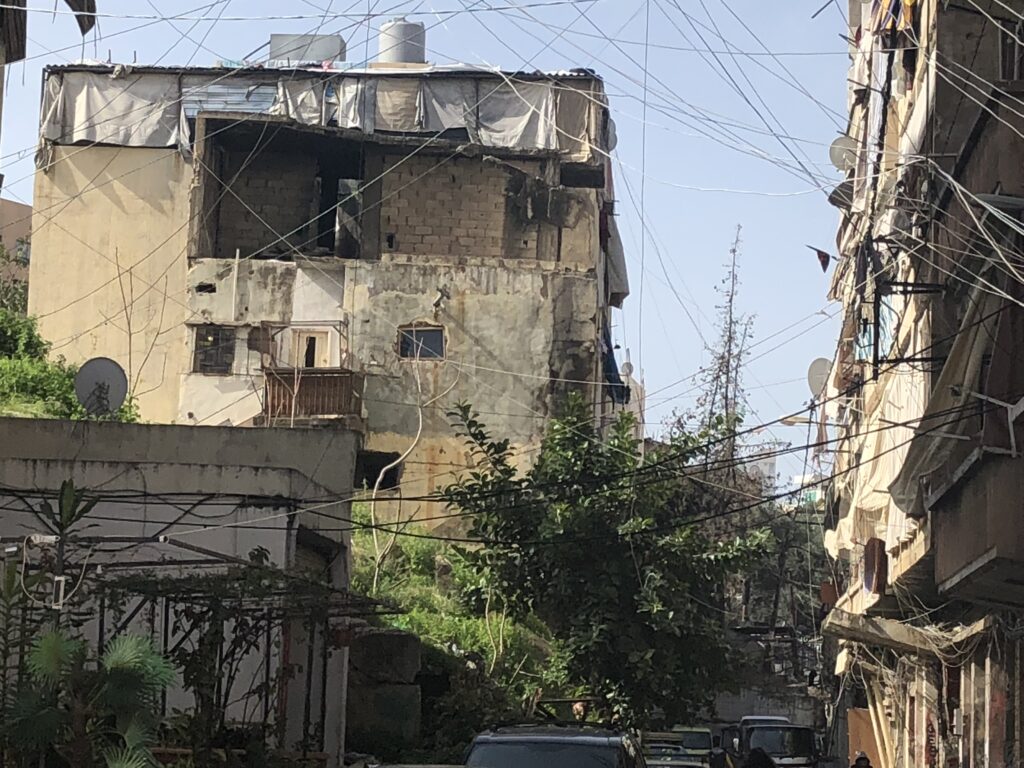Helen Underhill and Laura Hirst
For an estimated billion people around the world living in informal settings,1 the risk of loss of life, property or livelihood due to fire is significant. Despite fire being the fifth most common cause of injury or death globally, access to knowledge around fire safety and the practical steps residents can take to improve safety in their living situations remains sparse and is unevenly distributed. In this article, Helen and Laura talk about the work of Kindling Safety. They provide background to the problem of fire safety in informal settlements and argue that inclusion is important to improving fire safety education.
Informal settlements
When people within the humanitarian and development sectors talk about informal settlements, they might be referring to a temporary settlement of emergency tented shelters provided by intergovernmental organisations (such as UNHCR) for refugees displaced by conflict. They might also refer to urban residential areas where people adapt existing buildings to create new homes. These are often irregular and informal, and might involve practices such as living on rooftops or adding a floor to the top of an existing building. Individual shelters are maintained by the residents and settlements often function with little or no formal infrastructure (such as water, sanitation or electricity) provided by the state. Fire is an issue facing people living in both of these types of informal settlement.
Fire is also a daily concern for the people living in settlements often referred to as slums. These semi-urban informal settlements are unplanned, informally constructed, and comprise makeshift shelters and shacks. They are most commonly associated with ‘forgotten’ areas of large cities such as Cairo, Nairobi, Rio de Janeiro, Delhi or Johannesburg. These over-crowded settlements are generally home to people who have comparatively low-incomes and are more likely to work in the informal economy or in employment with little job security, or experience under or unemployment. The risk of fire to a household living in any of these types of settlement is not limited to loss of life or injury: the loss of property places an additional financial burden on already stretched resources.
The impact of a fire in one shelter or shack within an informal settlement can be devastating. The over-crowded nature of settlements means fire breaks are not always possible and are difficult to maintain. This means fires can (and do) spread from one shelter to the next rapidly, causing a domino effect across the settlement that can destroy hundreds of shelters in a matter of minutes. In hot, dry conditions, fires rip through tented settlements at speed, and evacuation routes are often hazardous and fraught with danger. Shelters are often constructed using combustible materials such as bamboo, wood, plastic and fabric, and many residents use tyres to hold down tin roofing or plastic sheeting. Having lived in shelters for many months and years, residents also often decorate inside with fabric pinned onto wooden frames, inadvertently covering fragile and overloaded electrical cabling in flammable material. Most households rely on gas bottles or open flames for cooking and heating, and many still use candles for light. The potential for fires to start is enormous and incidents occur with frightening regularity.

Recognition and inclusion
Developing knowledge around fire prevention and response is a necessity to improve safety for all people living in informal settlements. As the rate of rural-urban migration continues to increase and more people are displaced by conflict, the pressure on existing settlements is also set to increase and with it, the risk of further fire incidents.
Thinking about improving fire safety in informal settlements requires an understanding of how people live and what this means for how they experience fire risk. For example, cooking inside shelters is a common cause of fire, disproportionately impacting women and girls who remain most likely to be involved in caring responsibilities. One solution might be to create a communal cooking area located a short walk across the settlement to limit the use of fuel inside a shelter. At first glance, this appears to solve the problem as it moves the risk of fire to an outside space away from the shelter. However, in some contexts, a daily priority is to cook and eat together in a private space, or the caregiver may also need to remain close to young, elderly or immobile members of the household or be concerned about security. Inclusive fire education must pay attention to such concerns and practicalities by recognising the different ways in which people live.
Recognising that different people have different responsibilities that create additional burdens and fire risks is key. While women and girls most often interact with fuel for cooking and can easily be present when a fire starts, many young men feel an expectation that they have the physical capabilities to stop the fire from spreading by tearing the shelter down, or are perceived as being able to fight the fire. Aside from the obvious burden and additional risk that this places on some men, this expectation can also determine access to fire safety knowledge. When educational activities about responding to fire are only directed at able-bodied (younger) men, all other people in a settlement are more at risk – this includes women, girls, people with disabilities, different age groups. Where some men are seen as the custodians of knowledge about fire response and prevention, all capacity to respond leaves the settlement the moment they do.
For individuals and households with any additional need (be it physical, mental or age related) or experiencing any form of social exclusion or discrimination, the possibilities for recovery from fire – emotionally and financially – diminish. Social networks are key. Therefore, where fire safety messaging is delivered as part of community-wide ‘sensitisation’ (for example in leaflets or posters), recognition is also needed of how different people experience life within a settlement: Who is included in educational programmes and why and therefore who is excluded? How do cultural and social norms and histories determine what issues are included or excluded? How are different groups’ experiences represented in materials, in languages and images?
Only by recognising every person’s capacity to contribute to the reduction of fire risk is it possible to actually achieve fire safety for all.
Helen and Laura are researchers and practitioners working on a range of issues related to understanding and responding to fire risk, predominantly in humanitarian and development contexts.
Webpage: www.kindlingsafety.org
